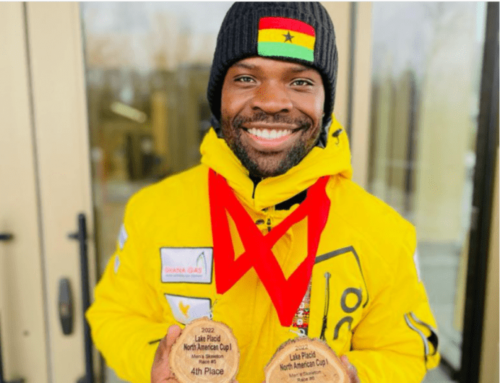If you’ve never seen skeleton races, this is what they look like: a skeleton racer speeding at speeds as high as 130 kmph, their faces only a few inches from an icy track as they lie as flat as possible. They use their toes and the rest of the body to maneuver themselves and steer themselves into position.
The world’s first sliding sport, skeleton racing is intense and tough on the bodies of those competing. It looks cool, sure, but it also requires a cool-headed person to master it.
Harder Than it Looks
If you look at a video of a pro skeleton racer going down an icy track, you might think, heh, that looks pretty easy. But the truth couldn’t be more different.
The tracks can be more than 1,300 meters long. And the sport is particularly intensive in terms of the physical strength that needs to be put in, since there’s a lot of sprinting involved. Endurance is also a marker of success, since the skeleton racer will find their face only inches from the icy track, which makes it pretty scary.
Catching Speed
 Contrary to what most people think, the speed doesn’t come from the slide itself. The first 50 meters are all about sprinting and pushing the sled as fast as possible—which is why sprinters make for great skeleton racers.
Contrary to what most people think, the speed doesn’t come from the slide itself. The first 50 meters are all about sprinting and pushing the sled as fast as possible—which is why sprinters make for great skeleton racers.
After that phase, the skeleton racers jump on the sled and go right down—headfirst—the track. Slight shifts in their bodies help them steer their sleds.
It’s a Demanding Sport
Like all sports, skeleton racing has its risks. Crashing is one of the biggest concerns for any skeleton racer. Since the racers are very close to the icy tracks, they can feel all its bumps and the freezing air. Going through corners increases the pressure on their body, making some movements particularly rough on the body.
You can smack your face, get a concussion, and become exhausted if you attempt anything above three runs a day.
What Makes it So Attractive?
For skeleton racers such as Akwasi Frimpong, what makes the sport so endearing is the thrill. Once the green light blares, the skeleton racer can think of nothing other than speeding down and of the thrill that comes with it. Pushing 5 Gs is hard, and there’s intense pressure as you feel your head grow heavier. But it’s all worth it when you hit the finish.
Akwasi Frimpong is all set to approach the 2022 Winter Olympics, and hopes to become the first Winter Olympics medalist for Africa.
Want updates on Akwasi’s progress? Check out his Twitter and Instagram pages!





Leave A Comment
You must be logged in to post a comment.